#Hittite
Text
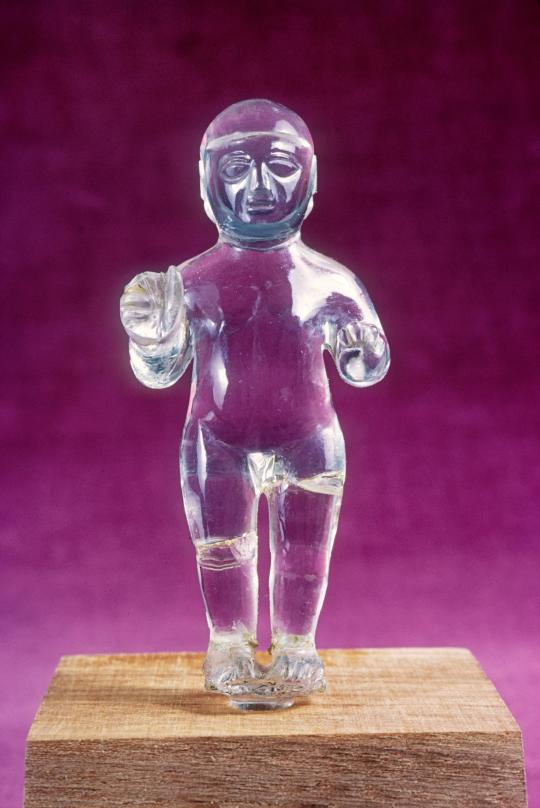
Unknown, (Anatolian)
Hittite
Figurine of a Child
1500-1200 BC
The big head, large ears, and short neck of this unusual figurine are
Place of Origin: Anatolia
rock crystal
2 9/16 x 1 1/8 x 13/16 in. (6.5 x 2.9 x 2 cm)
442 notes
·
View notes
Text

Orthostat Relief: Lion-Hunt Scene
Syria, Hittite, 10th−9th century BCE
219 notes
·
View notes
Text

Silver drinking vessel in the form of a fist, Hittite, 14th century BC
from The Museum of Fine Arts, Boston
340 notes
·
View notes
Text


Classicstober Day 14: Helen (𐀁𐀩𐀛/𒄭𒇷𒉌)
Helen of Troy… Helen Queen of Sparta… Helen Princess of Sparta… Helen the daughter of Leda and Zeus… the face that launched a thousand ships wore many masks over the course of her life but one thing that remains the same is how compelling she remains as a character. Many thanks to @symeona for helping me with her look!
Helen is a character intrinsically associated with her appearance, but early sources do not describe her at all outside of demonstrations of her status. For this piece, I have borrowed from two sources. The first is symeona, who's excellent translations on Ancient Greek color theory informed my take on Achilles. The second was that wretched and accursed fnckboy Ovid, who described Helen's mother Leda as having 'snowy white' skin and black hair. Since Zeus appeared to Leda in the form of a swan, and considering how pale Leda was, I decided to make her somewhat swan-like in appearance, with big black eyes and naturally ruddy lips to seal the deal.
First, let's talk about Helen the Spartan (rendered here in Linear B as 'Eleni of Laconia'). Despite mainly being known for her role in the Trojan War, Helen lived the majority of her life in Sparta and her husband Menelaus claimed the throne of Sparta through her. Laconia and Sparta are some of the oldest sites of Mycenaean culture, so Helen got to be depicted as Mycenaean as all getout. The high-piled hair, the diadem, the open tunic, and the bracelet are all very common in depictions of Mycenaean and Minoan women. She also has very elaborate florets to mark her status. The red fabric and large gemstones mark her wealth too i completely forgot to draw in the necklace she wore in the sketch version.
I mentioned before in my picture of Cassandra and Hector that I am basing the Trojan looks heavily on ancient Hittite clothing, and this is no exception. I know the movie Troy sucks for lots of reasons, but I did like that they made the Trojan theme color this very rich blue so I decided to add that here; dark, rich colors in general are very expensive to produce, so even if it's not red the saturation makes the cloth very expensive and a mark of royalty. I based her clothing and jewelry off a Hittite statue, but I decided to omit the tall hats that Hittite women appear to wear under their veils; I kind of wanted that to represent status, so only Andromache and Hecuba would wear the tall hats if I depict them.
I was not trying to make a commentary with it, but it does strike me how conservative the veiled, tunic wearing Hittite woman looks compared to the open-bodiced Mycenaean woman. That could easily be read into, but I'm just going to leave it as depiction and not try to ascribe any symbolism to it.
The decorative circle around Helen represents several things. Horses feature prominently in her life. The Trojan Horse is the most well known, but the wedding oath that Tyndareus made Helen's suitors swear to was sealed with the sacrifice of a horse too. Anemones are a sacred flower to Aphrodite (long story) and the white lilies seem like a fun way to evoke the 'pure woman' image.
Also in the circle are depictions of Eris' golden Apple of Discord. For the life of me, I could not find any translation related to fairness or beauty in any Mycenaean dictionaries so I had to cheat: "𐀴 𐀏𐀪𐀯𐀳𐀂/ti ka-ri-se-te-i" is just a phonetic transliteration of ΤΗΙ ΚΑΛΛΙΣΤΗΙ (tē(i) kallistē(i)), translated as 'for the fairest.'
#classicstober#classicstober2023#classicstober23#helen of troy#helen of sparta#greek mythology#ancient greek mythology#tagamemnon#linear b#mycenaean#hittite#hittite cuneiform#cuneiform
156 notes
·
View notes
Text

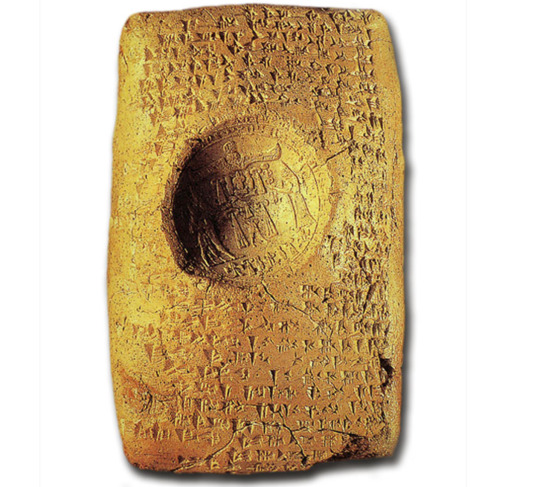
Divorce-Writ of King Ammistamru II
Ugarit, Syria
c. 1250 BCE
A tablet documenting the divorce of King Ammistamru II of Ugarit fromhattusa the daughter of the Amorite king Benteshina, sealed by the Hittite King Ammistamru. The king stands to the right, holding a spear, next to the "Weather God" who holds a club. They are both facing a long-robed female goddess (Arima, the chief Hittite sun-goddess) who stands at the left.
Source: Virtual Museum of Syria
#ugarit#hittite#baal#hadad#ugaritic costume#arima#sun goddess#huttusa#hittite gods#canaan#canaanite gods#phoenicia#phoenician gods#aram#aramean gods#syria#syrian gods#levantine gods#mesopotamia#mesopotamian gods#pagan gods#polytheism#archeology#magic#witchcraft#witchblr#paganblr#occult
266 notes
·
View notes
Text
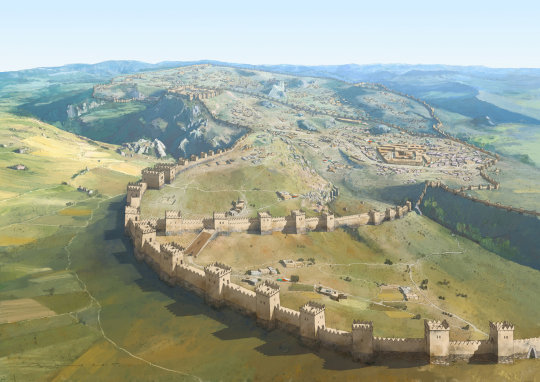
Capital of the Hittite Empire between 1420 and 1200 BC. Hattusa now lies in ruins beside Boğazkale, Turkey.
Learn more / Daha fazlası
https://www.archaeologs.com/w/hattusas/
#archaeologs#archaeology#archaeological#history#dictionary#art#hittite#hittite empire#hattusa#hattusas#illustration#hattuşa#arkeoloji#tarih#sanat#hitit#hitit imparatorluğu
68 notes
·
View notes
Text

Painting I made from around 1.5 years ago, depiting an elite warrior from the ancient Hittite Empire that ruled Anatolia and parts of the middle east. Hope you like it!
Best,
JCH
#dungeons and dragons#board games#concept art#fantasy art#tabletop games#digital painting#magic the gathering#character design#ancient history#armor#ancient egypt#hittite#babylon#assyria#persia
93 notes
·
View notes
Text
Hittite
In the 1800s archaeologists discovered cuneiform tablets written in an unknown language which they named Hittite.
In the language, Hittite is called 𒌷𒉌𒅆𒇷 nišili ‘the language of the city of Neša’.
In 1902 and 1915, Hittite was shown to be a previously-unknown member of the Indo-European language family, which was remarkable for several reasons:
The Hittite tablets remain to this day the oldest written records of any Indo-European language.
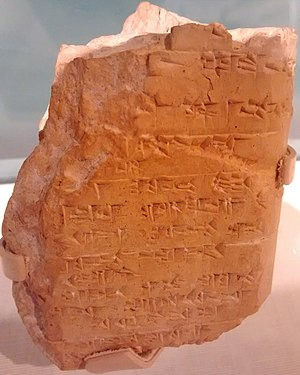
Hittite lacks masculine and feminine grammatical gender like most other Indo-European languages. Instead it contrasted animate vs. inanimate nouns, providing an important piece of evidence that Proto-Indo-European too only distinguished animate vs. inanimate nouns but not masculine vs. feminine.
In 1879, linguist Ferdinand de Saussure suggested that Proto-Indo-European (the first Indo-European language) had a type of sound called a laryngeal consonant, but that this sound had disappeared from all the surviving descendant languages, leaving only subtle traces on the sounds around them. This hypothesis went unproven until the discovery of the Hittite tablets, which contained exactly the laryngeal sounds that Saussure had predicted—a remarkable confirmation of his hypothesis.

Indo-European was traditionally divided between east and west into centum and satem languages (the words for ‘hundred’ in Latin and Avestan respectively), based on whether they retained the initial /k/ sound (centum languages) or had changed to an /s/ sound (satem languages). Hittite, however, is a centum language with /k/s even though it is located to the east in the satem area. This fact (and the discovery of Tocharian, another exception) forced linguists to rethink the east-west division and instead posit that the change from /k/ > /s/ started in the center of the family and spread outward like a wave.

If you’re interested in learning more about the history of the Indo-European language family, my book recommendation is The horse, the wheel, and language:
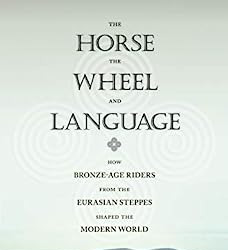
130 notes
·
View notes
Text
Experts have unlocked an unknown episode of ancient Hittite history from the inscriptions of a 3,300-year-old clay tablet, which was discovered in central Turkey in 2023. This palm-sized relic narrates a gripping tale of foreign invasion, civil war, and divine prayers, shedding light on a tumultuous era in the Hittite Empire's past.
29 notes
·
View notes
Text

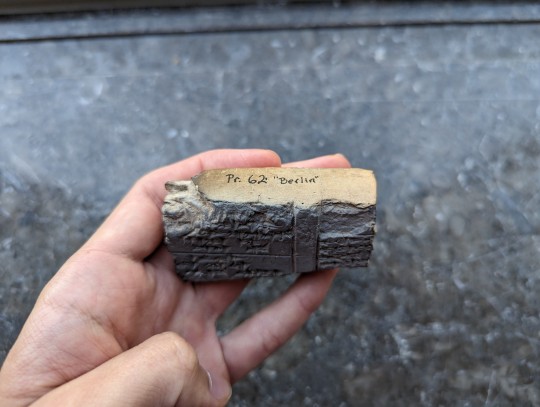
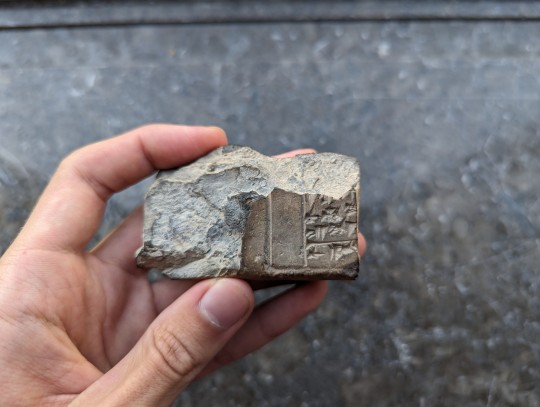
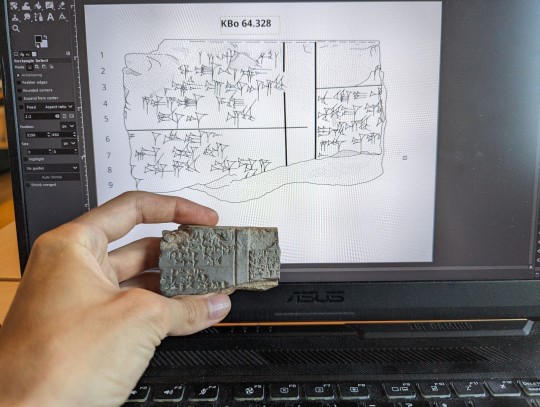
speaking of the summer school, i got to handle actual tablet fragments (!) and made a hand copy of this one
57 notes
·
View notes
Text

More Hittites
15 notes
·
View notes
Text
Ok I know this is probably a long shot but. Does anyone know of an etymological dictionary for Sumerian and/or Hittite lol. Or at least something that mentions the evolution of the words in some way?? If anyone has something like this or knows where to find it I will love you forever
#sumerian#hittite#linguistics#i had trouble finding an etymological dictionary for fucking ukrainian man. i dont have high hopes#but theres always a (however small) chance this post may reach some nerd with specific enough information to help me#if you are that nerd please please please please please please please please please please please please please
9 notes
·
View notes
Text
youtube
Watch the American Climate Leadership Awards 2024 now: https://youtu.be/bWiW4Rp8vF0?feature=shared
The American Climate Leadership Awards 2024 broadcast recording is now available on ecoAmerica's YouTube channel for viewers to be inspired by active climate leaders. Watch to find out which finalist received the $50,000 grand prize! Hosted by Vanessa Hauc and featuring Bill McKibben and Katharine Hayhoe!
#ACLA24#ACLA24Leaders#youtube#youtube video#climate leaders#climate solutions#climate action#climate and environment#climate#climate change#climate and health#climate blog#climate justice#climate news#weather and climate#environmental news#environment#environmental awareness#environment and health#environmental#environmental issues#environmental justice#environment protection#environmental health#Youtube
6K notes
·
View notes
Text
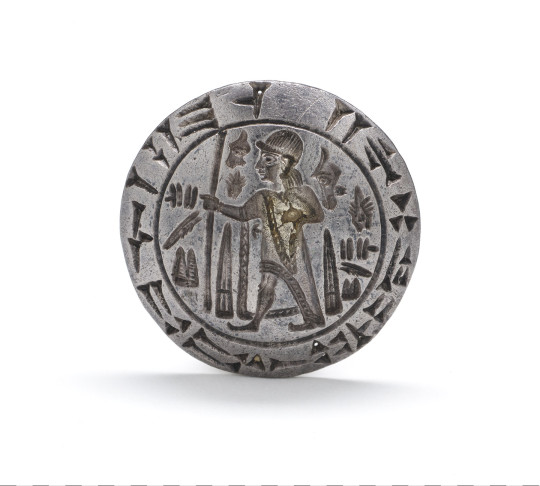
Seal of Tarkasnawa, King of Mira
Hittite, Anatolia, late 13th century BCE (Hittite Empire)
Luwian hieroglyphs surround a figure in royal dress. The inscription, repeated in cuneiform around the rim, gives the seal owner's name: Tarkasnawa, king of Mira. The name of the ruler was previously transliterated into English as Tarkondemos and Tarkummuwa. Other inscriptions naming Tarkasnawa of Mira are known, including seals found at Hattusa (the capital of the Hittite Empire) and the Karabel rock relief carving near Izmir, Turkey. Located in west-central Anatolia, Mira was a vassal state of the Hittite Empire. This seal, originally published in the 1860s, was purchased in Izmir by its first known modern owner, A. Jovanoff. Its famous bilingual inscription provided the first clues for deciphering Luwian hieroglyphs, which were previously called Hittite hieroglyphs.
61 notes
·
View notes
Text

Gold amulet of seated goddess with child, Hittite, 14th-13th century BC
from The Metropolitan Museum of Art
232 notes
·
View notes
Text
At the head of the female procession and facing the great god who is borne on the two men, stands a goddess on a lioness or panther. Her costume does not differ from that of the women: her hair hangs down in a long plait behind: in her extended right hand she holds out an emblem to touch that of the god. The shape and meaning of her emblem are obscure. It consists of a stem with two pairs of protuberances, perhaps leaves or branches, one above the other, the whole being surmounted, like the emblem of the god, by an oval with a cross-bar.
...
The goddess who at the head of the procession of women confronts the great sky-god in the sanctuary at Boghaz-Keui is generally recognized as the divine Mother, the great Asiatic goddess of life and fertility. The tall flat-topped hat with perpendicular grooves which she wears, and the lioness or panther on which she stands, remind us of the turreted crown and lion-drawn car of Cybele, who was worshipped in the neighbouring land of Phrygia across the Halys. So Atargatis, the great Syrian goddess of Hierapolis-Bambyce, was portrayed sitting on lions and wearing a tower on her head.At Babylon an image of a goddess whom the Greeks called Rhea had the figures of two lions standing on her knees.
--Simon Frazer, "The Golden Bough"
The Hittite frieze at Boghaz-Keui shows a goddess figure at the head of a procession, standing on a lioness or panther, holding some kind of plant or tree.
Familiar Near Eastern Goddess motifs -- the lady flanked by lionesses with a tall mural crown, holding the Tree of Life. Symbols of power and sovereignty over the natural world.
5 notes
·
View notes
